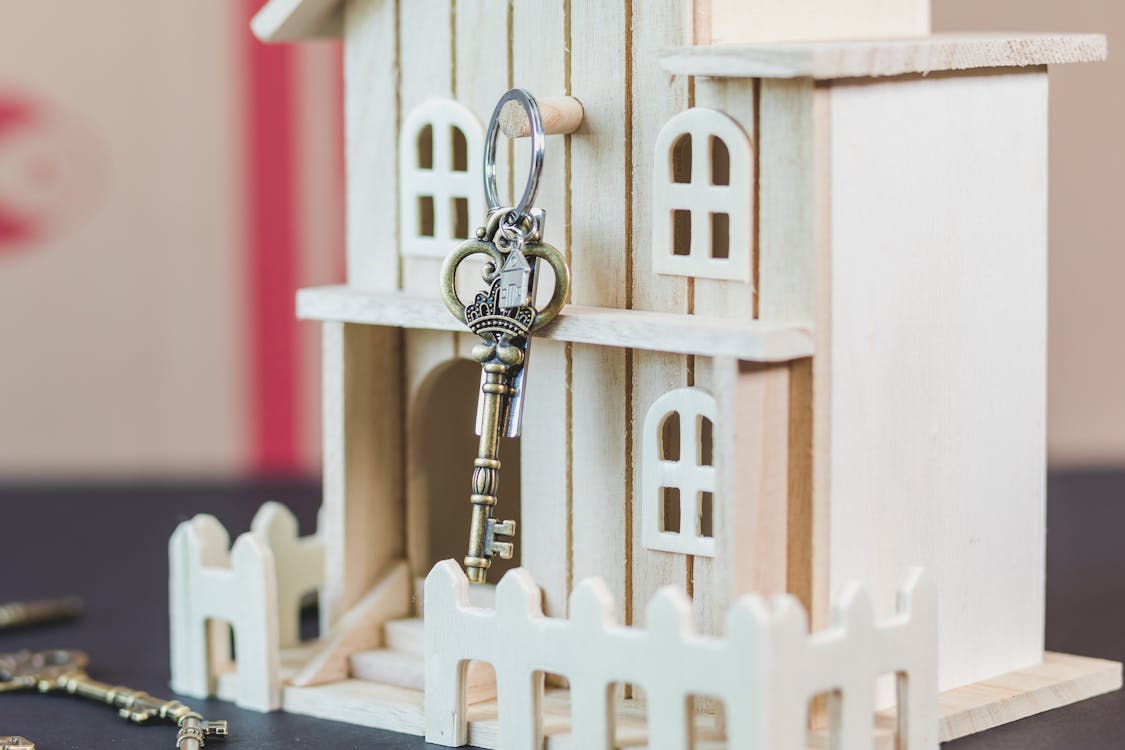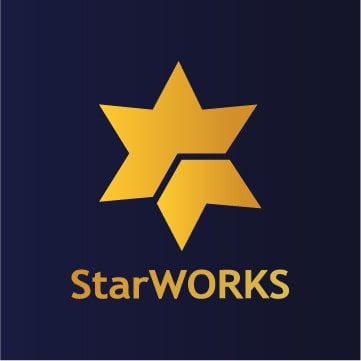Illustration of Real World Asset, photo by Jonathan Borba on Pexels
In recent years, the fusion of blockchain technology and traditional finance has given birth to a groundbreaking concept: Real World Asset (RWA) Tokenization. This innovative process involves converting the ownership of tangible and intangible assets into digital tokens, which can be traded and managed on a blockchain.
RWA tokenization is not just a technological marvel; it represents a seismic shift in how we perceive and interact with assets, from real estate and art to commodities and intellectual property.
As we delve deeper into the concept of RWA tokenization, we will explore its mechanics, benefits, challenges, and potential to revolutionize the financial industry. This article aims to provide a comprehensive understanding of RWA tokenization, its implications, and some study cases of limitations of past tokenization.
Actually, What Does Tokenization Mean?
Tokenization in blockchain means converting rights to an asset into a digital token on a blockchain. These tokens can represent various forms of value or rights, such as ownership, a share in an asset, access to services, or even voting rights. The concept extends beyond cryptocurrencies and can be applied to a wide range of assets, including but not limited to real estate, art, commodities, and intellectual property.
Key Components of Tokenization
- Digital Representation: Tokenization involves creating a digital representation of an asset or a right. This digital form is stored on a blockchain, ensuring its security and immutability.
- Fractional Ownership: One of the significant advantages of tokenization is the ability to divide an asset into smaller, more affordable units. This fractionalization allows a broader range of investors to participate in the ownership of high-value assets.
- Smart Contracts: These are self-executing contracts with the terms of the agreement directly written into code. Smart contracts automate the execution of transactions and enforce the terms of the tokenization process.
- Blockchain Technology: The backbone of tokenization, blockchain provides a decentralized and transparent ledger for recording the creation, ownership, and transfer of tokens.
What is Real World Asset (RWA) Tokenization?

Illustration of Asset, photo by RDNE Stock Project on Pexels
Real World Asset (RWA) Tokenization is the tokenization application to tangible and intangible assets in the physical world. It involves creating digital tokens representing ownership, a share of value, or rights associated with real-world assets such as real estate, artwork, commodities, or even intellectual property. These tokens are recorded and managed on a blockchain, ensuring their security, transparency, and ease of transfer.
Before the advent of blockchain technology, tokenization had been in use, particularly in financial institutions since the 1960s, to protect credit card details and transaction records. Hospitals also employ this method to secure sensitive patient data and governments to manage voter registration.
In traditional tokenization, information is stored as alphanumeric tokens and then processed through a cryptographic function to ensure each token's uniqueness. The concept of blockchain tokenization mirrors this traditional approach.
How Does Real World Asset (RWA) Tokenization Work?
The process of RWA tokenization typically involves the following steps:
- Asset Identification: Selecting a real-world asset to be tokenized. This can range from a piece of land or a building to a piece of art or a patent.
- Legal Structuring: Ensuring that the tokenization process complies with relevant laws and regulations and setting up the legal structure to represent the asset in tokenized form.
- Valuation: Determining the asset's value will influence the tokens' pricing.
- Token Creation: Issuing digital tokens on a blockchain to represent ownership or a share in the asset. These tokens can be designed to carry various rights, such as revenue sharing, voting, or access rights.
- Distribution and Trading: Selling the tokens to investors and enabling their trade on secondary markets. This step provides liquidity to the asset and allows for fractional ownership.
Limitations & Challenges of Tokenization
While tokenization has shown great promise in revolutionizing finance, several limitations have hindered its widespread adoption. According to the study and journal, past tokenizations have some limitations; here are some examples.
- Technology and Infrastructure Unpreparedness:
According to McKinsey & Company, a shortage of institutional-grade digital assets custody and wallet solutions has limited the available infrastructure for tokenization. Additionally, blockchain technology, particularly public permissionless versions, has struggled with limited system uptime at high transaction throughputs. The fragmented blockchain infrastructure also creates interoperability challenges across financial institutions, introducing new risks and liquidity fragmentation.
Additionally, a study by Deloitte revealed that 45% of financial institutions consider the current state of blockchain and related infrastructure as a significant barrier to the adoption of tokenization.
- Limited Short-Term Business Case and High Implementation Costs
Many of tokenization's benefits materialize at scale, requiring a cost-intensive transition that lacks clear short-term benefits. Organizations often face challenges in gaining buy-in for such transitions, which may involve running digital-twin operations to reduce operational and regulatory risks.
According to the report by PwC, the average cost of implementing a tokenization solution in a medium-sized financial institution is estimated to be around $2.5 million, with unclear short-term returns on investment. Furthermore, the lack of interest from legacy clients in capital markets in 24/7 infrastructure poses additional challenges. - Market Immaturity
Tokenization requires instantaneous cash settlement for faster settlement times and greater capital efficiency. However, there is currently no cross-bank solution at scale. The global market for tokenized assets is projected to grow to $24 billion by 2027, but as of 2021, only about $4 billion worth of assets were tokenized, indicating the market's immaturity and early stage of development.
The tokenization provider landscape is fragmented, and there is an absence of at-scale distribution channels for digital assets. Unlike established distribution channels used by wealth and asset managers, many tokenized assets are available only on homegrown platforms.
- Regulatory Uncertainty
The regulatory framework for tokenization has been inconsistent across regions or absent. In the US, challenges are related to undefined settlement finality, the legally binding status of smart contracts, and unclear requirements for qualified custodians.
Additionally, A survey conducted by the World Economic Forum found that 64% of financial institutions cite regulatory uncertainty as the primary obstacle to adopting tokenization.
- Lack of Comprehensive Standardization
Current tokenization platforms often digitize assets, not the underlying liabilities or cash flows. According to the Home of FinTech & Banking News, this leads to a veneer of innovation where assets can be transferred more efficiently. However, the underlying cash flows still require human intervention for assessment.
By focusing on tokenizing cash flow obligations and ensuring they are machine-readable and executable, the technology can avoid the lack of transparency and verifiability that contributed to the 2008 financial crisis.
- Need for Smart Financial Contracts
Implementing smart financial contracts that are self-executing and stored on the blockchain can automate financial transactions, making them more transparent, secure, and efficient. However, standardizing these contracts is crucial to ensure they are machine-readable and executable at an algorithmic level.
- Global Progress and Collaboration
While the world is moving towards a digitized and decentralized financial landscape, industry-wide collaboration and a clear strategic vision are strongly needed to overcome the current limitations of tokenization.
Initiatives from key institutional bodies, such as the proposal by the Bank for International Settlements (BIS) to fuse Central Bank Digital Currencies (CBDCs), tokenized deposits, and assets on a programmable platform, can help realize the full benefits of tokenization.
The real-world assets tokenization journey is rife with lessons in the form of setbacks and stumbling blocks. Below, we list a few notable historical examples of tokenization failures and challenges:
- Mt. Gox Saga
The collapse of Mt. Gox, the first major cryptocurrency exchange, had a profound impact on the perception of tokenization, even though it wasn't directly related to tokenizing real-world assets. The loss of approximately 850,000 Bitcoins, valued at around $473 million at the time, created a wave of fear and skepticism towards digital assets and tokenization. This event significantly dampened market enthusiasm for years, slowing down the exploration of tokenization by institutional players.
- The DAO Incident
The DAO, a decentralized investment platform, made headlines for its innovative approach but ultimately became infamous due to a security breach. A hacker exploited a vulnerability, leading to the loss of around $50 million worth of Ether. This incident not only caused a split in the Ethereum community but also raised serious doubts about the security and viability of tokenized investment models, pushing institutional interest in asset tokenization to the sidelines.
- Illiquidity of Tokenized Real Estate
Early attempts to tokenize real estate encountered challenges due to a lack of liquidity. For example, Property Coin, a platform for tokenizing real estate, struggled to attract enough buyers and sellers. This highlighted that tokenization alone might not address the inherent liquidity issues in markets like real estate. However, more recent tokenization efforts in this sector have developed more sophisticated models to tackle these challenges.
While the failures of Mt. Gox, The DAO, and early tokenized real estate ventures highlight the challenges and risks associated with tokenization, they also serve as valuable lessons for the industry. These incidents underscore the importance of robust security measures, regulatory compliance, and addressing liquidity concerns.
As the industry continues to evolve and learn from past failures, the future of RWA Tokenization looks promising. With a focus on security, regulatory compliance, and market infrastructure, tokenization has the potential to revolutionize various sectors, making asset ownership and investment more accessible and efficient for a broader audience.
Disruption in Industries through RWA Tokenization
The disruption in industries through Real-World Asset (RWA) Tokenization is significant, with various sectors experiencing transformative changes in how assets are managed, traded, and invested. Here are some data and statistics that highlight the disruption of RWA tokenization across different industries:
- Real Estate
The global real estate market is estimated to be worth $280 trillion, with only a fraction currently tokenized. Tokenization in real estate could unlock $1.4 trillion in new investment opportunities by 2027, according to a report by Cushman & Wakefield and Propy. This would represent a significant shift in how real estate assets are owned, traded, and managed, making them more accessible to a broader range of investors. - Art and Collectibles
The art market is another area where tokenization is making waves. The tokenization of art and collectibles could reach a market size of $6.3 billion by 2030, per BNP Paribas's report. This would allow for fractional ownership of high-value artworks, making it easier for investors to diversify their portfolios with alternative assets. - Commodities
The tokenization of commodities like gold and oil could significantly impact the commodities market. For example, the World Gold Council estimates that tokenized gold could represent up to 10% of the global gold market, valued at approximately $11.5 trillion. This would give investors a more flexible and liquid way to invest in gold.
- Financial Securities
The tokenization of financial securities, such as stocks and bonds, is expected to grow rapidly. A report by the World Economic Forum predicts that by 2027, 10% of the global GDP, approximately $24 trillion, will be tokenized. This would revolutionize how securities are issued, traded, and settled, making the process more efficient and accessible.
- Infrastructure and Energy
The tokenization of infrastructure and energy assets is also gaining traction. For instance, tokenizing renewable energy assets could facilitate more efficient funding and trading of green projects. A study by PwC also suggests that tokenization could unlock up to $1.5 trillion in new investment in renewable energy by 2035.
Milestones in Tokenizing Real-World Assets
The disruption in industries through Real-World Asset (RWA) Tokenization has paved the way for significant milestones in tokenizing real-world assets. As we witness transformative changes in sectors such as real estate, art, and commodities, these innovations have set the stage for remarkable achievements in the tokenization space.
Here are some notable achievements and projects in the tokenization of RWAs:
- tZERO's Tokenized Real Estate Offering
In 2020, tZERO, a leader in blockchain innovation for capital markets, announced the tokenization of approximately $25 million of equity in a luxury hotel development in Manchester, UK. This marked one of the first instances of a major real estate project being tokenized on a blockchain.
- Curzio Research's CEO Token
In 2018, Curzio Research launched the CEO token, representing an equity stake in the company. This was one of the first instances of a U.S.-based company successfully tokenizing its equity and offering it to accredited investors, raising over $4 million.
- Meridio's Brooklyn Property Tokenization
Meridio, a blockchain-based platform for real estate tokenization, successfully tokenized a multi-family property in Brooklyn, New York, in 2018. This project demonstrated the potential for fractional ownership of real estate assets through tokenization.
- Blockchain Capital's BCAP Token
In 2017, Blockchain Capital, a venture capital firm investing in blockchain technology companies, launched the BCAP token, representing a limited partnership interest in the fund. This was one of the first instances of a venture fund being tokenized, raising $10 million in six hours.
- Tokenization of Fine Art
In 2018, Andy Warhol's artwork "14 Small Electric Chairs" was tokenized and sold on the Maecenas platform. This marked a significant milestone in the tokenization of fine art, allowing investors to own fractional artwork shares.
The recent launch of BlackRock first tokenized fund, BUIDL, on the Ethereum network marks a significant trend in the tokenization of real-world assets (RWAs). This development demonstrates the increasing integration of traditional financial products with blockchain technology, making them more accessible through digitization.
Tokenization enables the issuance and trading of ownership on a blockchain and offers benefits such as instantaneous and transparent settlement and flexible custody options.
StarWORKS` Role in Real-World Asset Tokenization
StarIGT represents StarWORKS` innovative answers to the evolving landscape of blockchain-based tokenization. As a cornerstone of its digital asset ecosystem, StarIGT aims to disrupt and redefine how real-world assets are tokenized and traded.
StarIGT is a blockchain-based platform that enables businesses to transform their real-world assets (RWAs) into digital tokens. This innovative medium provides a marketplace where businesses can offer their RWAs as fractional non-fungible tokens (NFTs), making them more accessible and easier to trade. By leveraging the power of blockchain technology, StarIGT offers a secure, transparent, and efficient platform for investors and asset owners alike.
In conclusion, turning real-world assets into digital tokens is a trend quickly gaining momentum and potentially revolutionizing various industries. With platforms like StarIGT leading the charge, the future of investing in these tokenized assets is becoming digital, decentralized, and democratized.




